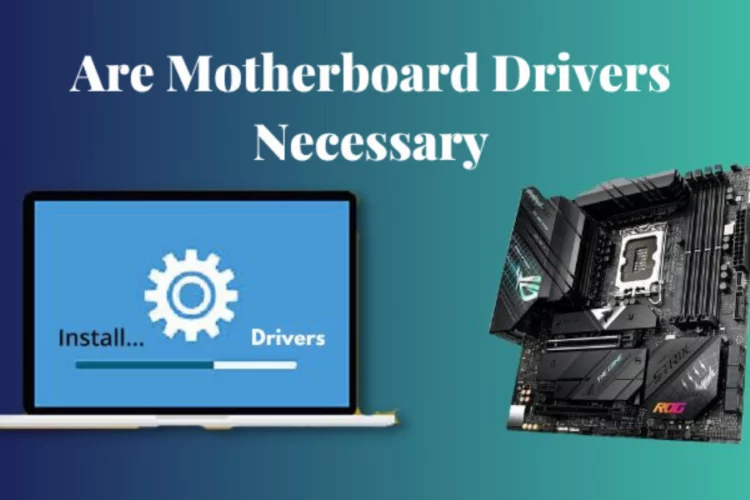Assembling a computer is a meticulous process, and one crucial step is installing motherboard drivers. These drivers play a pivotal role in ensuring seamless communication between the operating system and the hardware components. In this comprehensive guide, we’ll explore how to install motherboard drivers, covering various scenarios and addressing common questions to make the process hassle-free.
Why is Motherboard Drivers Essential?
Motherboard drivers act as translators, facilitating communication between the hardware components and the operating system. They optimize performance, enable hardware features, and ensure system stability.
How to Install Motherboard Drivers?
Understanding the Importance of Motherboard Drivers. Before delving into the installation process, it’s crucial to understand why motherboard drivers are essential. These drivers act as translators, facilitating communication between the operating system (OS) and the various hardware components on the motherboard. By optimizing performance, enabling hardware features, and ensuring system stability, motherboard drivers play a pivotal role in the overall functionality of a computer.

Read More: How Long Does a Motherboard Last?
6 Essential Steps: How to Install Motherboard Drivers
- Gather Essential Information Identify your motherboard model. This information is typically found on the motherboard itself or in the documentation that came with your computer. Knowing your motherboard model is crucial for downloading the correct drivers.
- Determine the Operating System (OS) Visit the official website of the motherboard manufacturer. Navigate to the support or download section and select your operating system (e.g., Windows, Linux) to access the compatible drivers.
- Download the Drivers Download the necessary drivers from the manufacturer’s website. This includes chipset drivers, audio drivers, LAN drivers, and any additional components specific to your motherboard.
- Install the Chipset Drivers First Chipset drivers are foundational as they provide essential communication between the motherboard and other components. Install them first to ensure proper functionality.
- Audio and LAN Drivers Installation Proceed to install audio and LAN drivers. These drivers enhance audio quality and enable network connectivity.
- Graphics Drivers (If Not Integrated) If your motherboard doesn’t have integrated graphics, install the graphics drivers for your dedicated GPU.
Installing Motherboard Drivers without Internet Connection:
- Download Drivers on a Different Device If your new system lacks internet connectivity, download the required drivers on another device that has internet access.
- Manual Installation Transfer the downloaded drivers to your new system using a USB drive or external storage. Manually install the drivers by right-clicking on the driver file and selecting ‘Install.’
Installing Motherboard Drivers without CD:
- Download Drivers Online If your motherboard didn’t come with a driver CD; download the necessary drivers from the manufacturer’s website.
- USB Installation Transfer the downloaded drivers to a USB drive and install them on your new system.
Related Article: How To Enter Motherboard Bios? Complete Guide
Installing Motherboard Drivers from USB:
Step 1: Copy Drivers to USB Drive Copy the downloaded drivers to a USB drive using a computer with internet access.
Step 2: Install Drivers on the New System Insert the USB drive into the new system and manually install the drivers.
Related Article: How To Remove Gpu From Motherboard? Compete Guide
Installing Motherboard Drivers with CD:
Step 1: Use the Provided CD If your motherboard came with a driver CD, insert it into the optical drive and follow the on-screen instructions.
Step 2: Online Verification After installation, check the manufacturer’s website for any updated drivers. CDs may contain outdated versions.
Where do I update my motherboard drivers?
Visit the official website of your motherboard manufacturer to download the latest drivers.
Do motherboard drivers update automatically?
While some drivers may update automatically, it’s advisable to check for updates manually for optimal performance.
Are motherboard drivers pre-installed?
Some basic drivers may be included in the OS, but it’s recommended to install the latest ones from the manufacturer’s website.
Should I install all my motherboard drivers?
Yes, installing all necessary drivers ensures optimal performance and functionality.
How do I update my motherboard BIOS?
Follow the manufacturer’s instructions, usually involving downloading the BIOS update from their website and flashing it onto the motherboard.
At what point during the motherboard installation should you install the motherboard drivers?
After physically installing the motherboard, install drivers before connecting peripherals.

